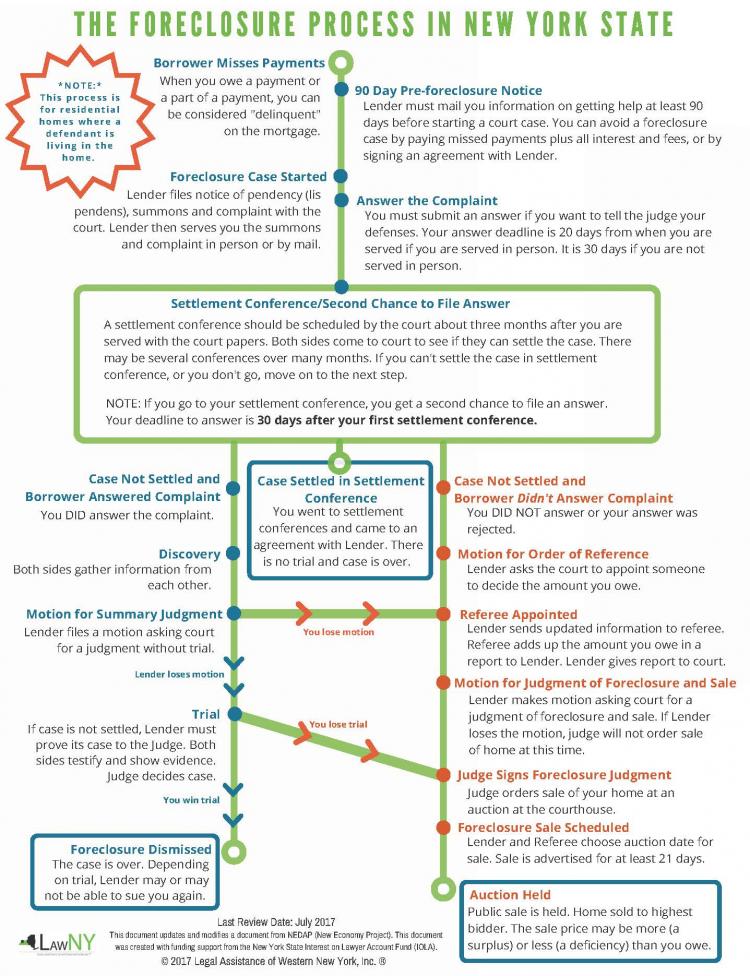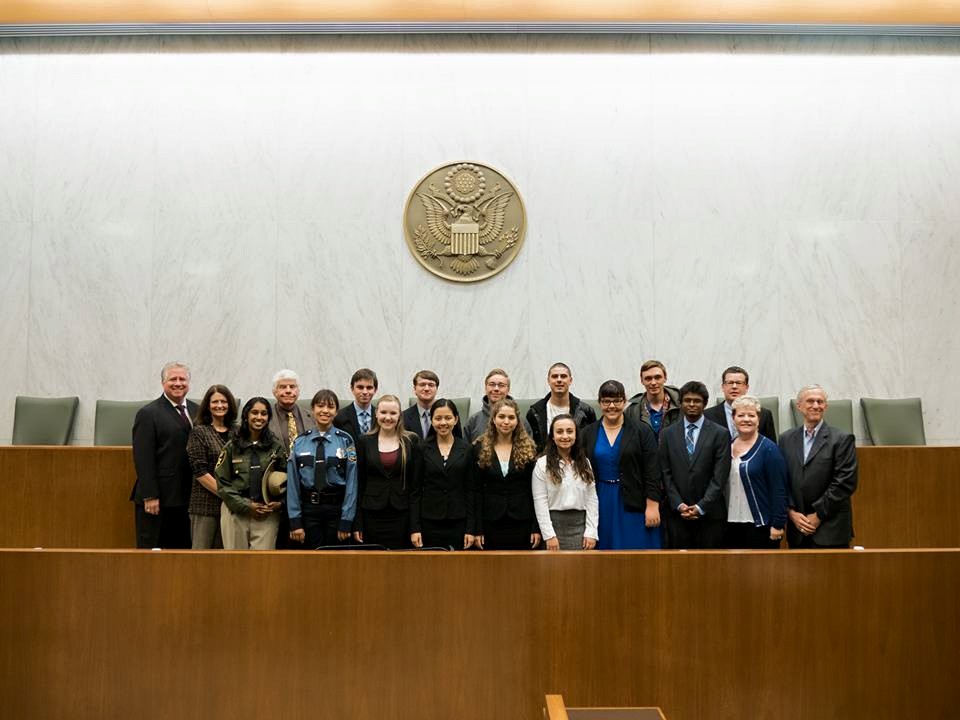If your upstairs neighbor is noisy, there are ways to deal with it. In this case, the defendant, the downstairs neighbor, may not have handled it properly. This is not just an L&T summary proceeding. This landlord went to Supreme Court and also sought and received an injunction.
25 CPW City Views LLC v. Cohen, NYLJ February 13, 2020, Date filed: 2020-01-22, Court: Supreme Court, New York, Judge: Justice James D'Auguste, Case Number: 152876/2018:
"On a preliminary injunction motion, the movant must show a probability
of success on the merits, irreparable injury absent the grant of the
relief, and a balance of equities in the movant’s favor (CPLR 6301; Nobu
Next Door, LLC v. Fine Arts Hous., Inc., 4 NY3d 839, 840 [2005]).
“Proof establishing these elements must be by affidavit and other
competent proof, with evidentiary detail” (Scotto v. Mei, 219 AD2d 181,
182 [1st Dept 1996]; see CPLR 6312 [a]). The determination of such a
motion lies within the sound discretion of the trial court (see
Ciminello Property Assocs. v. New 970 Colgate Ave. Corp., 173 AD3d 447,
448 [1st Dept 2019]; Scialdone v. Stepping Stones Assoc., L.P., 148 AD3d
950, 952 [2d Dept 2017]).
An injunction may be granted even where
there are factual questions for trial, so long as the movant can
demonstrate a probability of success on the merits (CPLR 6312 [c]; see
1234 Broadway LLC v. West Side SRO Law Project, Goddard Riverside
Community Ctr., 86 AD3d 18, 23 [1st Dept 2011] [movant "need not tender
conclusive proof beyond any factual dispute establishing ultimate
success in the underlying action," just a clear right to the relief];
Ying Fung Moy v. Hohi Umeki, 10 AD3d 604, 605 [2d Dept 2004] [conclusive
proof not necessary; likelihood of success may be found even when
disputed facts]; Four Times Sq. Assoc. v. Cigna Invs., 306 AD2d 4, 5
[1st Dept 2003] ["likelihood of success on the merits may be
sufficiently established even where the facts are in dispute and the
evidence is inconclusive"]). This Court finds that while the parties
have submitted conflicting affidavits, injunctive relief in plaintiffs’
favor should be granted.
To assert a claim for private nuisance, the
plaintiff must establish the following elements: “(1) an interference
substantial in nature, (2) intentional in origin, (3) unreasonable in
character, (4) with a person’s property right to use and enjoy land, (5)
caused by another’s conduct in acting or failure to act” (Copart Indus.
v. Consolidated Edison Co. of N.Y., 41 NY2d 564, 570 [1977]; see also
Domen Holding Co. v. Aranovich, 1 NY3d 117, 124 [2003] [nuisance is
implicated by a pattern of continuity or recurrence of objectionable
conduct]; Chelsea 18 Partners, LP v. Sheck Yee Mak, 90 AD3d 38, 41 [1st
Dept 2011]; 61 W. 62 Owners Corp. v. CGM EMP LLC, 77 AD3d 330, 334 [1st
Dept 2010], affd as modified 16 NY3d 822 [2011]). Conduct in this
context is intentional when the defendant acts with the purpose of
causing the invasion, knows that it will result, or is substantially
certain it will result, from his or her conduct (Copart Indus. v.
Consolidated Edison Co. of N.Y., 41 NY2d at 571; see 61 W. 62 Owners
Corp. v. CGM EMP LLC, 77 AD3d at 334-335; Chelsea 18 Partners, LP v.
Sheck Yee Mak, 90 AD3d at 43). However, not every intrusion will
constitute a nuisance, the issue is “whether a defendant’s use of his or
her property constitutes an unreasonable and ‘continuous invasion of
[the plaintiff's property] rights’” (Ewen v. Maccherone, 32 Misc 3d 12,
14 [App Term 1st Dept 2011], quoting Domen Holding Co. v. Aranovich, 1
NY3d at 124; see also Golub v. Simon, 28 AD3d 359, 360 [1st Dept 2006];
Rodriguez-Nunci v. Clinton Hous. & Dev. Co., 241 AD2d 339, 340 [1st
Dept 1997]).
Here, through the affidavits of Stempler, the Prior
Tenants, Lowenkron, as well as the affidavits of the resident property
managers, Lyons and Quinn, and of Friedman, the property manager for 25
CPW, plaintiffs demonstrated a pattern of recurring objectionable
conduct, and that Cohen’s interference was substantial. These affidavits
show that Cohen was repeatedly and significantly disturbing Stempler’s
right to use and enjoy 18H by not only banging on Stempler’s floors at
all hours of the day and night, but by confronting Stempler at her
apartment door, throwing garlic powder at her, banging on her door,
yelling and shouting at her not only during the day, but late at night;
insisting that the front desk knock on Stempler’s door, waking her up in
the middle of the night; calling the police; and repeatedly attaching
on or slipping under her door threatening, insulting, and degrading
notes. Plaintiffs submitted copies of Cohen’s notes to her, as well as
emails Cohen sent to the property managers constantly complaining about
Stempler. Cohen’s behavior began when Stempler moved in, and apparently
has escalated to physical confrontations.
Plaintiffs submitted the
Prior Tenants’ affidavits as proof that Cohen made similar unfounded
noise complaints against them, and that they refused to renew their
lease because of it. Similarly, Lowenkron, the owner of apartment 17I,
adjacent to Cohen’s apartment, attested that Cohen made the identical
claims against tenants in 17I for noises they were making in simply
using the apartment in a normal manner, such as taking a morning shower,
flushing the toilet, or using the kitchen in the evening, and Cohen
sent emails and left notes for those tenants (NYSCEF Doc. Nos. 48-49).
25 CPW submits proof that it expended over $4,000.00 in soundproofing
18H in August and September 2016, and that the installations met or
exceeded New York City Code requirements, falling within the “Superior
Soundproofing Category” for the flooring in 18H (NYSCEF Doc. Nos.
54-57).
Plaintiffs also demonstrated that Cohen’s disturbances of
plaintiffs were intentional. Cohen, herself, admits that she purposely
engaged in this behavior. The repeated nature of Cohen’s acts and the
fact that they occurred at all hours of the day and night, often
deliberately waking Stempler, establishes the third and fourth elements
of the nuisance claim, that the interference was unreasonable and
affected Stempler’s and 25 CPW’s rights to use and enjoy the apartment
(see 61 W. 62 Owners Corp. v. CGM EMP LLC, 77 AD3d at 334).
In
opposition, Cohen offered nothing but her own affidavit, claiming that
her admitted intrusions were warranted in response to noise Stempler was
making in moving around in 18H. Her complaints about Stempler’s noises,
however, are not corroborated by other evidence, or even any factual
detail. Indeed, her assertions that Stempler was dropping bowling balls
or other heavy objects are somewhat incredible given that Stempler is
elderly, has MS, and walks with a cane. The only other proof she
submits, a purported audio recording of noises coming from Stempler’s
apartment on June 28, 2018, as well as a video of Stempler taking cell
phone photos of Cohen in the building lobby on June 9, 2018, are
inadmissible because they are unauthenticated, lack any foundation and
were provided only with an apparent link to a Dropbox account. In
addition, it is unclear how Stempler’s actions in taking a photo of
Cohen was causing her various complaints against Stempler. Lyons and
Quinn, the resident property managers for the building, attested that
Cohen’s complaints about Stempler lacked merit, and that she made the
same unsubstantiated noise complaints about the Prior Tenants, and the
neighboring tenants in both 17I and 17G, even when the apartments were
vacant (NYSCEF Doc. Nos. 50-53). In fact, Lyons unequivocally stated
that Cohen made numerous noise complaints, and that “in no instance were
any of Cohen’s noise complaints found to have any merit whatsoever,”
and that no other tenant or occupant complained of the noise that Cohen
alleged was occurring (NYSCEF Doc. No. 50, Lyons aff, 8). Even if
Cohen’s affidavit raised a factual issue as to whether Stempler had been
making noises that were disturbing Cohen, this factual issue does not
subvert plaintiffs’ establishment of a clear right to relief (see Matter
of Advanced Digital Sec. Solutions, Inc. v. Samsung Techwin Co., Ltd.,
53 AD3d 612, 612 [2d Dept 2008] [existence of fact issue alone does not
justify denial of motion]; Sau Thi Ma v. Xuan T. Lien, 198 AD2d 186, 187
[1st Dept 1993] ["even when facts are in dispute, the nisi prius court
can find that a plaintiff has a likelihood of success on the merits,
from the evidence presented, though such evidence may not be
'conclusive'"] [citation omitted]).
Plaintiffs have also
demonstrated irreparable injury. An injury is irreparable when it cannot
be adequately compensated by money damages, or when there is no
pecuniary standard to measure damages (see 67 NY Jur 2d Injunctions
section 17, citing Poling Transp. Corp. v. A & P Tanker Corp., 84
AD2d 796, 797 [2d Dept 1981]; see also Di Fabio v. Omnipoint
Communications, Inc., 66 AD3d 635, 636-637 [2d Dept 2009]). The movant
must show that the injury is threatened and imminent (Family-Friendly
Media, Inc. v. Recorder Tel. Network, 74 AD3d 738, 739 [2d Dept 2010]),
and what constitutes such injury depends not only on the facts but upon
the discretion of the court (see Matter of Samuelsen v. Yassky, 29 Misc
3d 840, 848 [Sup Ct, NY County 2010] [Singh, J.]). Stempler is elderly
and has MS, and attests that she is afraid of Cohen, afraid to leave her
apartment, and fears that with the clear escalation of the conduct,
Cohen may throw something more dangerous than garlic powder on her. She
details the nightly assault on her quiet enjoyment of her apartment. She
asserts that the constant stress Cohen has inflicted upon her has
exacerbated her many serious MS symptoms (see NYSCEF Doc. No. 79,
attending physician statement). This is sufficient to demonstrate
irreparable injury under the circumstances of Cohen’s escalating
harassment to warrant injunctive relief (see 61 W. 62 Owners Corp. v.
CGM EMP LLC, 77 AD3d at 335; Parkmed. Co. v. Pro-Life Counselling, 91
AD2d 551, 552-553 [1st Dept 1982] [preliminary injunction issued to
prevent screaming, shouting, physical and verbal threats, assault
harassment, abuse and intimidation]).
As to the balance of the
equities, they clearly tip in favor of granting relief to plaintiffs.
The potential harm to Stempler’s health and well-being if an injunction
is not issued has been demonstrated. Cohen’s harassment is persistent,
disruptive, escalating and frightening Stempler in her own home. There
is no apparent harm to Cohen by prohibiting her from contacting,
appearing at Stempler’s door or on the 18th floor of the building, or
from shouting or screaming at her, or engaging in verbal or written
threats or intimidating her.
Cohen’s argument that this Court lacks
jurisdiction to issue the preliminary injunction, because the relief
sought is a criminal protective order, is rejected. Plaintiffs are not
seeking a criminal protective order; rather, they are seeking to enjoin
Cohen’s harassing behavior which is affecting plaintiffs’ enjoyment of
their property in 18H. The case upon which Cohen relies, People ex rel.
Bennett v. Laman (277 NY 368, 376 [1938]) is not to the contrary. The
Court of Appeals in that case stated that while a court of equity will
not enjoin the commission of a crime, “the criminal nature of an act
will not deprive equity of the jurisdiction that would otherwise attach”
so long as it seeks to protect some proper interest (id. at 376). Here,
plaintiffs seek to enjoin a private nuisance that is interfering with
their property rights, and not to punish Cohen for her past acts,
whether criminal or not. This clearly falls within the equity
jurisdiction of this Court. Thus, plaintiffs satisfy the requirements
for a preliminary injunction, and their motion is granted.
Cohen’s
motion for preliminary injunctive relief, however, fails to meet such
requirements. Cohen fails to demonstrate a likelihood of success on the
merits of her claims. In her answer, she purports to assert
counterclaims for nuisance, harassment, stalking, menacing, and
intentional infliction of emotional distress. She fails to make any
showing that she will succeed on the merits of any of these
counterclaims; in fact, she does not mention any of her claims. She
asserts only that Stempler is the aggressor, and has banged on the floor
of her apartment, and scraped chairs and furniture, solely to harass
Cohen (NYSCEF Doc. No. 28, answering affidavit of Linda Cohen, 7).
At the same time, however, she admits to her confrontations with
Stempler, and that she authored and delivered the various notes to
Stempler. This proof falls woefully short of her burden in seeking
injunctive relief. “Conclusory statements lacking factual evidentiary
detail warrant denial of a motion seeking a preliminary injunction”
(1234 Broadway LLC v. W. Side SRO Law Project, Goddard Riverside
Community Ctr., 86 AD3d at 23). Cohen’s attempt, in her reply papers, to
submit what she claims is video proof that Stempler was stalking her,
and audio proof of Stempler’s noises, fails to save her application. As
discussed above, the video and audio recordings are not authenticated,
provided only by an apparent link to DropBox, and lacking any foundation
for the submission of such proof.
The court further notes that
plaintiffs recently responded to Cohen’s apartment from June 4, 2019
through September 23, 2019. They submit a noise monitoring report for
the period of June 4, 2019 to July 8, 2019, and an affidavit from an
engineer, James W. Pugh, PhD, P.E. (Dr. Pugh), who states that he has
expertise in evaluating the measurement of levels of sound intensity
through decibel readings as indicated in the noise monitoring report
(NYSCEF Doc. Nos. 76-77, 80). Dr. Pugh states that, in his opinion to a
reasonable degree of scientific certainty, there is no correlation
between the sound complaints from Cohen’s apartment (17H) and an
increased sound decibel level in the apartment except for one instance,
and, in that one instance, the elevated decibel level was minimal
(NYSCEF Doc. No. 80, affidavit of James Pugh, PhD, P.E., 3). He
concluded that there is a lack of acceptable correlation between Cohen’s
complaints and any increased decibel readings. Even without this
additional proof by plaintiffs, as discussed above, Cohen failed to
demonstrate a likelihood of success on the merits of her counterclaims.
Therefore, her application for injunctive relief is denied."




















